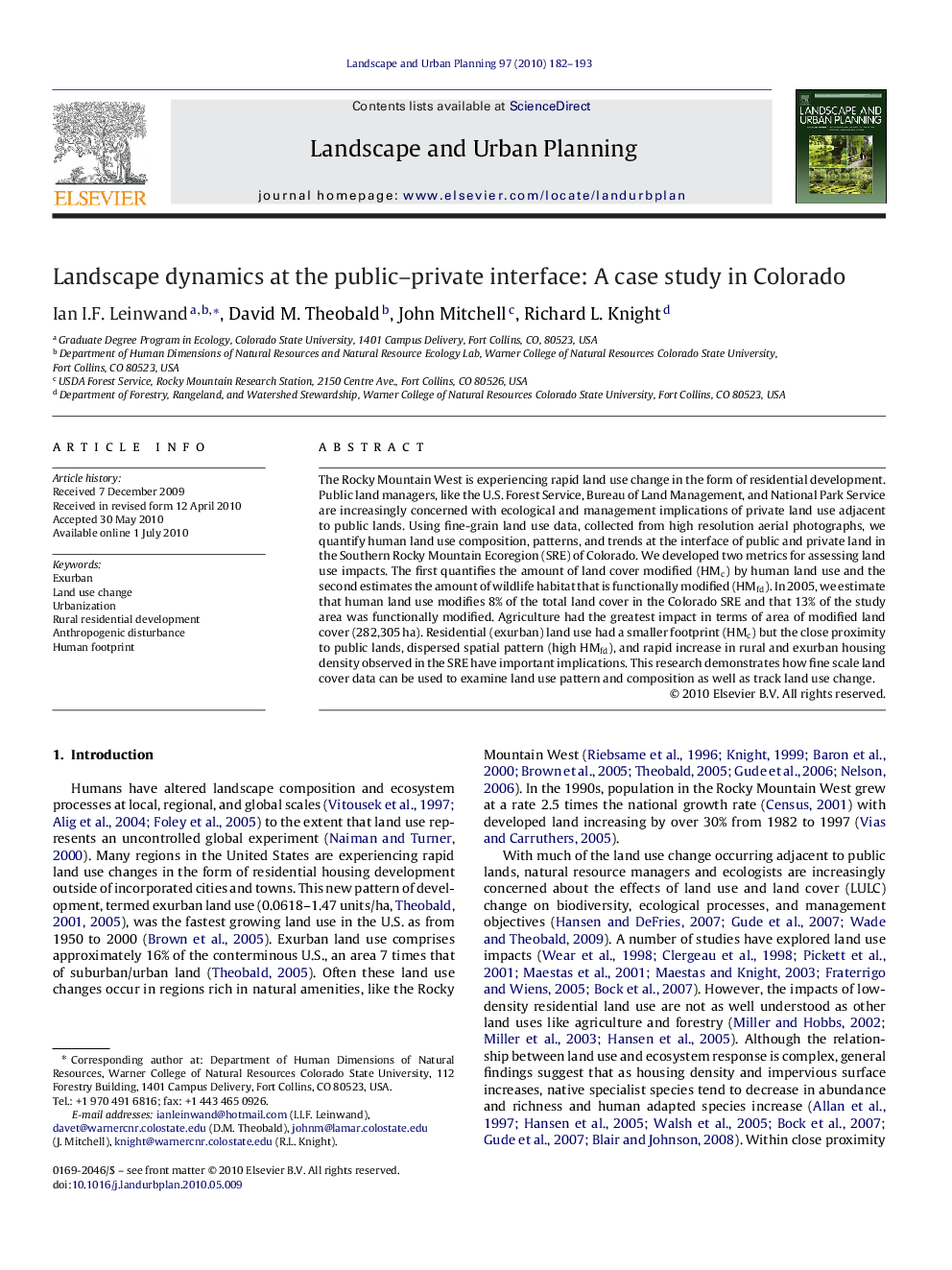| Article ID | Journal | Published Year | Pages | File Type |
|---|---|---|---|---|
| 1050094 | Landscape and Urban Planning | 2010 | 12 Pages |
The Rocky Mountain West is experiencing rapid land use change in the form of residential development. Public land managers, like the U.S. Forest Service, Bureau of Land Management, and National Park Service are increasingly concerned with ecological and management implications of private land use adjacent to public lands. Using fine-grain land use data, collected from high resolution aerial photographs, we quantify human land use composition, patterns, and trends at the interface of public and private land in the Southern Rocky Mountain Ecoregion (SRE) of Colorado. We developed two metrics for assessing land use impacts. The first quantifies the amount of land cover modified (HMc) by human land use and the second estimates the amount of wildlife habitat that is functionally modified (HMfd). In 2005, we estimate that human land use modifies 8% of the total land cover in the Colorado SRE and that 13% of the study area was functionally modified. Agriculture had the greatest impact in terms of area of modified land cover (282,305 ha). Residential (exurban) land use had a smaller footprint (HMc) but the close proximity to public lands, dispersed spatial pattern (high HMfd), and rapid increase in rural and exurban housing density observed in the SRE have important implications. This research demonstrates how fine scale land cover data can be used to examine land use pattern and composition as well as track land use change.
